[Update as on 18 October, 2019] – Target Outranking Share and Target Search Page Location bidding strategies have been discontinued from June, 2019.
AdWords is not just about getting the right message but also about delivering it at the right time. Your competitors are also vying for the same objective. The common goals makes the auction competitive and though your ad does show when a user enters a valid query, you might end up ranking lower at some instances. All this might happen because of lower bidding than your competition.
But should you bid higher to compete from your competitors? Would you then even bid higher than your non-competitors. How do you identify how much lower are you bidding? Which are those competitors who are ranking above you?
This needs to be handled in two steps. First, identifying the competitors and secondly setting up a bidding strategy that helps outrank the competition. The former objective is met with Auction Insights Report and the latter with the help of Target Outranking Share bidding strategy.
Using Auction Insights Report To Identify Your AdWords Competitors
To identify the competitors, auction insights report lists down the advertisers who are competing with you during the auction. You can view this report for your campaigns, ad groups and keywords. With the help of insights from this report, you can modify your bids and budgeting strategies to scale up the overall performance.
Here are the steps to access your auction insight report.
Step 1: Select the campaign, ad group or keyword for which you wish to check the competition strength. Now click on ‘Detail’ drop down menu and select ‘Selected’ (if you wish to see results of select ad groups or keywords or campaigns) or ‘All’ (if you wish to see results for all ad groups or keywords or campaigns)
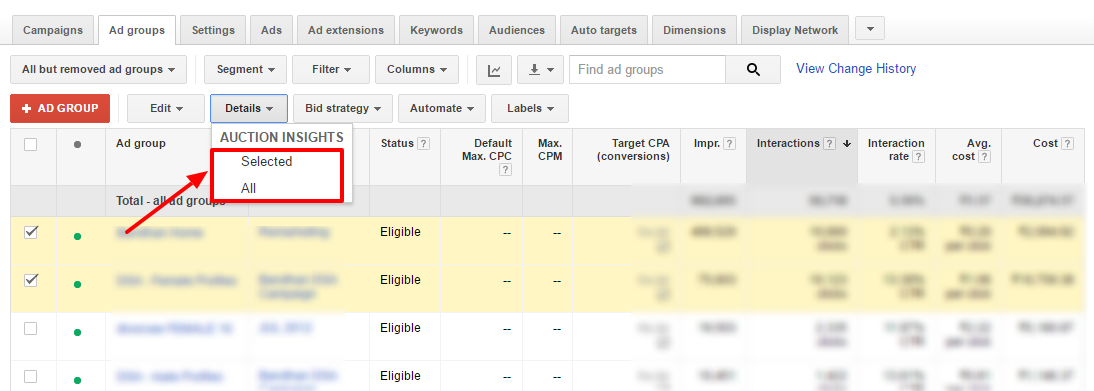
Step 2: You will see the report as shown below. If you wish you can choose to segment your report basis ‘Device’ or ‘Time’ to get more insight. This can be done be selecting Device or Time from segment drop down menu.
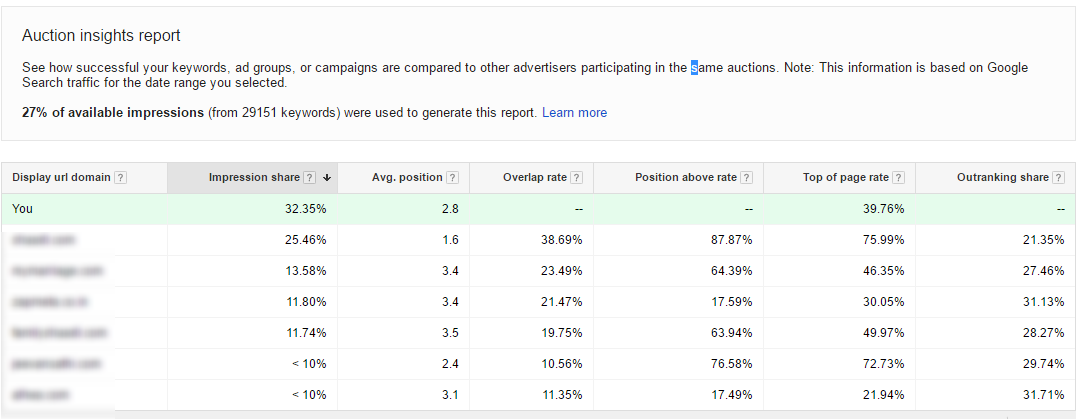
Now that you have the stats in front of you, to identify the competitor who is outranking you, look at the outranking share column. This column gives the data of how many times your ad ranked higher than the listed advertiser. You might want to quickly analyze this data and highlight those domains where your outranking share is lower.
Using Target Outranking Share
Now that you have the domains that you wish to outrank, the next step is to set up this automated bidding strategy. But first, let us try to understand what it would do to your campaign or ad group or keyword.
Target Outranking Share, automatically modifies your bids on a daily basis, lowering it or increasing it, in order to outrank the ads from your competition.
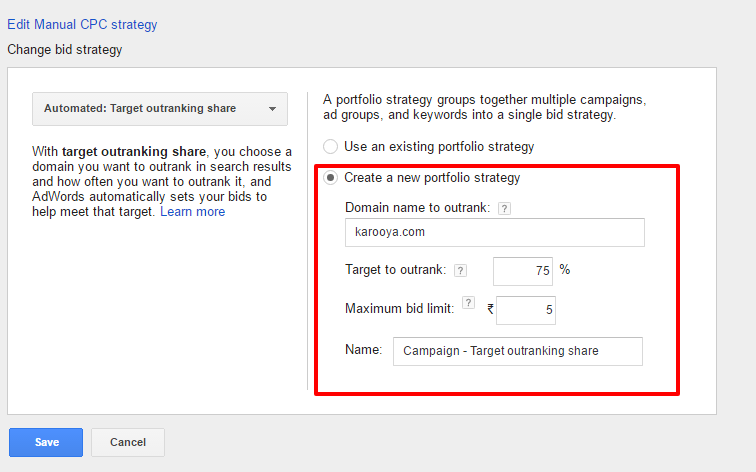
As seen in the snapshot above, you need to mention the domain (manually selected or shortlisted from the auction insight report). You then need to specify the % of auctions in Target to outrank for which you wish to rank better than the competition. The Maximum bid limit specifies the highest bid you want Google to set for this bidding strategy.
You can use Target Outranking Share by creating a ‘bid strategy’ and applying it to multiple campaigns or keywords or ad groups.

You can also set this strategy by selecting the campaign or ad group or keyword and modifying bidding strategy to Target Outranking Share.
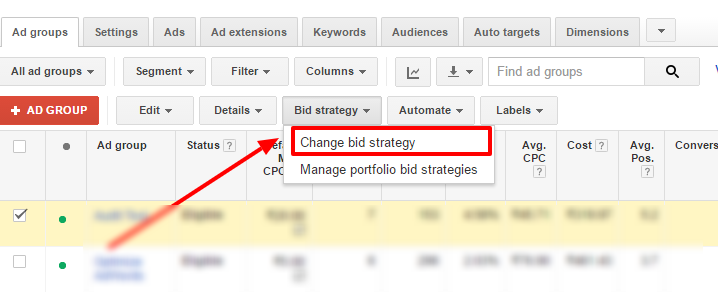
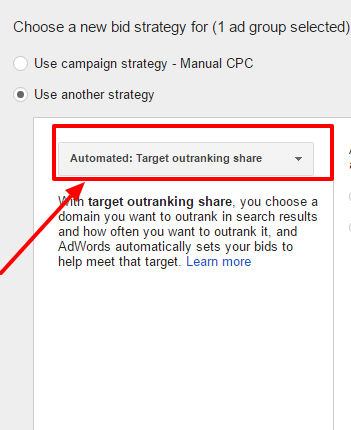
Pitfalls of Using Target Outranking Share Bidding Strategy
Yes, target outranking share is a strategy to beat your competition but it doesn’t ensure improving the overall performance.
- The bid isn’t changed before every auction, but once a day. Unlike Smart Bidding where real-time updates are made, this strategy is a type of automatic bidding where the bids are modified basis historical pattern. So, if your competitor lowers or increases your bid during the day, real-time changes to your bid won’t be made.
- This strategy even if it is a loss making proposition will still continue to outrank the selected domains. So, the emphasis is not on driving conversions or clicks, but to rank better than your competition.
- Your overall ad rank stays unaffected with the use of this strategy, as it is only to ensure you rank above your competitive domains.
- You can outrank only one competitor at a time. You need to thus check if the website you considered your competition is still a competition or not, or if there is yet another website that is giving you tough competition.
- If your competition happens to reduce its competitiveness, then even though you rank better than your competition, the overall competition to rank on top prevails.
- Google alters the bid basis historical performance vis-a-vis the competition. It does not bid basis what your competition or others are bidding. Your overall competitiveness stays unaffected, only the competitiveness for the competition you specify is optimized.
Related Links:






Shashank
A very nice article to read. It has almost cleared my doubt about everything related to outrank share-bidding strategy.
Thanks for sharing!